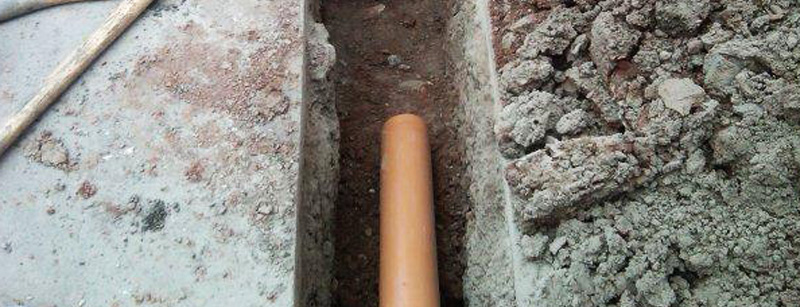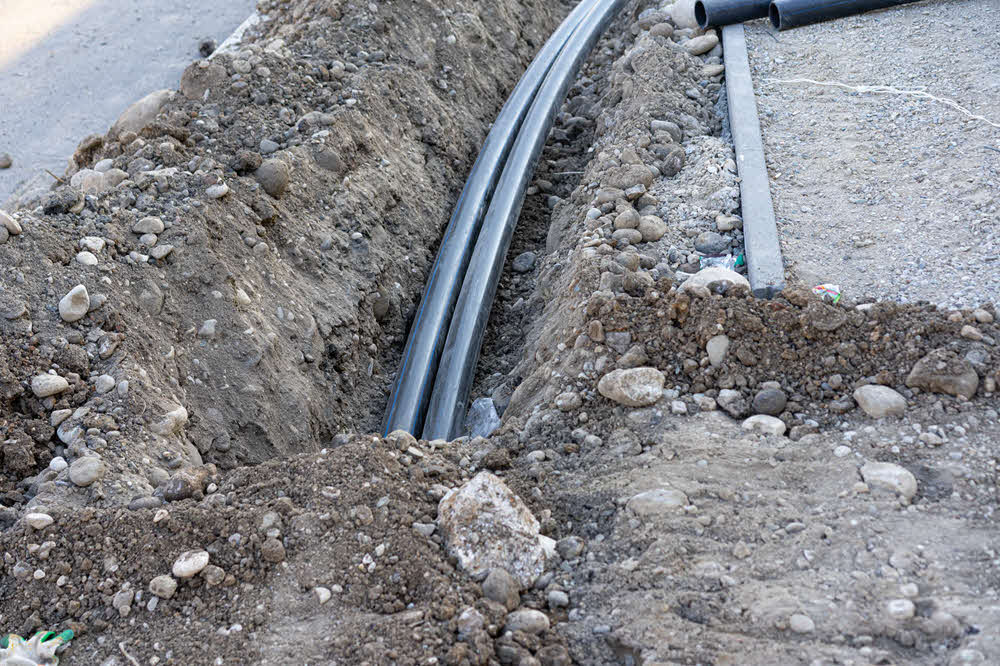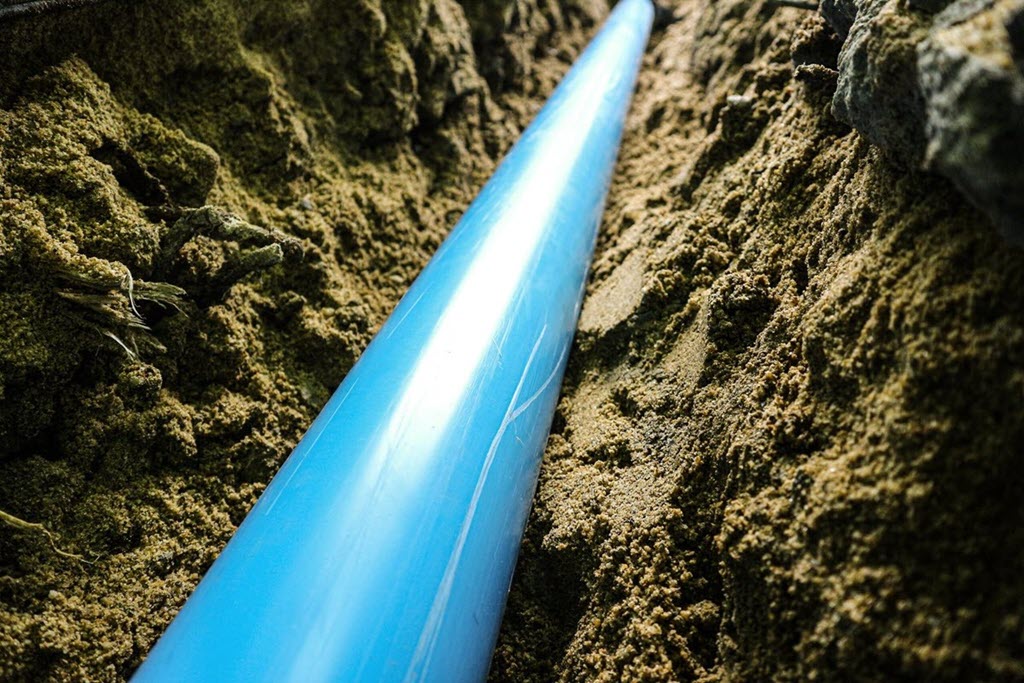Pipe Laying Servicesin Addison MI
Pipe Laying Services to Support Efficient Infrastructure Development
We Are Locally Owned & Operated For Over 36 Years
Contact Us Today!
We Serve Businesses In And Around The Following Cities:
About Pipe Laying Services
Introduction
In the world of commercial property development, laying down pipe takes center stage for a myriad of important operational reasons. This major construction process, often called pipelaying, is responsible for creating the infrastructure to transport vital resources such as water and gas across a city like Addison. Thus, understanding the intricacies and benefits of pipe laying, whether it’s installing a storm water drain pipe or running a gas pipe underground, is the key to successful and efficient infrastructural planning. So, let’s delve into this integral process, its utility, benefits, and essential applications that underpin the growth of the city.
Understanding Pipe Laying
Pipelaying involves several elements, from planning and excavation to installation and maintenance. For commercial properties, the underground network of piping is responsible for essential functions like gas supply or stormwater drainage, highlighting the importance of running propane lines or PVC storm water pipes underground properly.
In Addison, organizations such as D&J Contracting have specialized expertise in handling the complex process of pipe laying, ensuring seamless operations and longevity of the commercial property’s infrastructure. Their in-depth knowledge includes dealing with varied materials like PVC and materials for high-stakes utilities such as gas and sewerage systems.
Benefits of Pipe Laying
When adequately managed, pipelaying provides tangible benefits to the city and its commercial entities. It ensures the efficient disposal of rainwater through drain pipes for rainwater, supplying gas to buildings through running gas pipe underground, or managing waste generation through underground sewer pipe installation. Precision and meticulous execution in these tasks ensure the smooth running of a city’s backbone services.
Moreover, pipelaying offers environmental benefits. For instance, correctly installed stormwater drain pipe systems prevent flooding, reducing environmental damage and property loss. They help maintain Addison’s aesthetic appeal and contribute to the city’s environmental sustainability initiatives.
Real-world Applications of Pipe Laying in Addison
In Addison, pipelaying has significant real-world applications across several sectors. For instance, D&J Contracting, a reputable company in Addison, has conducted proactive pipelaying for stormwater mitigation on commercial properties. They’ve installed PVC storm water pipes as a durable, cost-effective solution for managing rainwater in the city’s changeable weather conditions.
Similarly, with the city’s growth and the increasing demands for safer, more efficient energy supplies, they’ve played key roles in running propane lines and gas pipes underground. These crucial tasks have ensured uninterrupted gas supply to the city’s commercial buildings and contributed significantly to its residents’ upkeep and prosperity.
Further elucidating the real-world applications, installing underground sewer pipe installations or setting up an underground storm pipe requires expertise and knowledge, which D&J Contracting consistently provides. By keeping the city’s sewer system functional, businesses can operate effectively without facing health risks or damaging the environment, further enhancing Addison’s image as a well-rounded, sustainable city.
The Integral Role of Pipe Laying in Commercial Properties
From an operational perspective, correctly laid pipelines are a commercial property’s lifeline, supplying essential resources like water and gas or removing waste. When installing utilities like running propane lines underground, the expertise of a professional company like D&J Contracting is essential. Their skill set effectively reduces potential hazards and maintains the efficient operation of such crucial systems.
Additionally, an effective stormwater drain pipe installation or having a robust underground storm pipe in place can protect the commercial property from rainfall damage, vital in a city like Addison with its variable weather. This protection isn’t only about maintaining operations but also about preserving the asset value of the property itself.
Reflection: Modern Pipelaying for Tomorrow’s Cities
As Addison continually develops, the role of well-executed pipelaying cannot be overstated for maintaining and fostering the city’s growth. From supplying vital resources to protecting property value and the environment, the process affirms its place in effective city planning and property development. Specialists like D&J Contracting play an invaluable role, ensuring the city’s infrastructural skeleton remains strong and operational.
This exploration into pipelaying’s process, benefits, and real-world applications underlines the unignorable significance of this skill set. As you navigate the challenges and opportunities of developing commercial properties in Addison or other booming locales, consider the critical role that effective pipe laying via a reliable partner can play. After all, the future cities of tomorrow stand firmly on the foundations laid today.
Pipe Laying Services Gallery


Call Us Today to receive your Free Quote for
Pipe Laying in Addison
Serving: Addison, Michigan

About Addison, Michigan
In 1834, three years before Michigan became a state, John Talbot settled along a winding creek in a vast forest, dotted with clear blue lakes and occupied by the Potawatomi. With the raising of a simple grist mill along Bean Creek around December 1835, Addison’s history was started, operating under the settlement name “Manetue.”
Having failed to secure a spot along the river that provided enough water power to run his mill, Talbot dismantled the settlement and moved to the present location of Addison, and by the fall of 1836, milling operations restarted. The town was renamed “Peru” by 1838, and over the next generation would be given several other monikers before the final name of Addison was entered onto plat maps in 1851. Addison J. Comstock, a banker from Adrian, Michigan, purchased a sizable plat of the pioneer town and changed the identity to reflect this acquisition. The village itself was incorporated as such in 1893.
The village grew sufficiently to attract the railroad in 1883, an event which contributed to a sudden expansion of the local economy. Businesses came to Addison in great numbers including a three-story hotel, designed to cater to the visiting tourist. The Addison Courier newspaper started its 76-year run in 1884, and the economic upturn brought on by the railroad continued well after the line ceased to operate through Addison.
One of Addison’s last landmarks, the old grist mill built in 1848, was removed in 1980. Despite the economic downturn of the village in the last half of the 20th century, a large 3-day sesquicentennial celebration was held in 1984. Additionally, a 175th Anniversary celebration spanning only one day was held in the village on August 8, 2009.
In the later 2010s, the medical cannabis industry identified Addison as a community open to economic expansion with provisioning and grow centers. As of 2022, Addison has two open facilities and two additional operations under construction.
Two history books have been written on the village in recent years, “The History of Addison, Michigan” in 1996 and “Memories of Addison” in 2013, both by village historian Dan Cherry. Among the early village historians were A.J. Kempton, Richard DeGreene, J. DeWitt McLouth and Alice Slocum.
Addison got its own radio station in August 2014 with the sign-on of WQAR-LP “Q95 the Panther” at 95.7 FM. The station is owned by Addison Community Schools and programmed by students with classic rock music.
Addison Community Schools is a K-12 central campus with 797 students. The current superintendent is Scott Salow. The school mascot is a black panther.
According to the United States Census Bureau, the village has a total area of 1.00 square mile (2.59 km), of which 0.96 square miles (2.49 km) is land and 0.04 square miles (0.10 km) is water.
| Census | Pop. | Note | %± |
|---|---|---|---|
| 1880 | 291 | — | |
| 1890 | 425 | 46.0% | |
| 1900 | 470 | 10.6% | |
| 1910 | 474 | 0.9% | |
| 1920 | 416 | −12.2% | |
| 1930 | 452 | 8.7% | |
| 1940 | 465 | 2.9% | |
| 1950 | 488 | 4.9% | |
| 1960 | 575 | 17.8% | |
| 1970 | 595 | 3.5% | |
| 1980 | 655 | 10.1% | |
| 1990 | 632 | −3.5% | |
| 2000 | 627 | −0.8% | |
| 2010 | 605 | −3.5% | |
| 2020 | 573 | −5.3% | |
| U.S. Decennial Census | |||
As of the census of 2010, there were 605 people, 245 households, and 156 families residing in the village. The population density was 630.2 inhabitants per square mile (243.3/km). There were 274 housing units at an average density of 285.4 per square mile (110.2/km). The racial makeup of the village was 97.0% White, 0.5% African American, 0.3% from other races, and 2.1% from two or more races. Hispanic or Latino of any race were 1.0% of the population.
There were 245 households, of which 35.9% had children under the age of 18 living with them, 42.0% were married couples living together, 16.3% had a female householder with no husband present, 5.3% had a male householder with no wife present, and 36.3% were non-families. 28.2% of all households were made up of individuals, and 11.8% had someone living alone who was 65 years of age or older. The average household size was 2.47 and the average family size was 3.06.
The median age in the village was 35.1 years. 26.8% of residents were under the age of 18; 10% were between the ages of 18 and 24; 26.3% were from 25 to 44; 26.1% were from 45 to 64; and 10.7% were 65 years of age or older. The gender makeup of the village was 46.8% male and 53.2% female.
As of the census of 2000, there were 627 people, 247 households, and 164 families residing in the village. The population density was 642.6 inhabitants per square mile (248.1/km). There were 265 housing units at an average density of 271.6 per square mile (104.9/km). The racial makeup of the village was 98.41% White, 0.16% Native American, 0.96% Asian, 0.16% from other races, and 0.32% from two or more races. Hispanic or Latino of any race were 2.07% of the population.
There were 247 households, out of which 35.2% had children under the age of 18 living with them, 50.2% were married couples living together, 13.8% had a female householder with no husband present, and 33.2% were non-families. 29.6% of all households were made up of individuals, and 10.5% had someone living alone who was 65 years of age or older. The average household size was 2.54 and the average family size was 3.17.
In the village, the population was spread out, with 31.1% under the age of 18, 9.7% from 18 to 24, 28.2% from 25 to 44, 19.6% from 45 to 64, and 11.3% who were 65 years of age or older. The median age was 35 years. For every 100 females, there were 94.7 males. For every 100 females age 18 and over, there were 87.8 males.
The median income for a household in the village was $35,781, and the median income for a family was $45,313. Males had a median income of $31,875 versus $23,000 for females. The per capita income for the village was $15,883. About 6.0% of families and 8.1% of the population were below the poverty line, including 7.2% of those under age 18 and 7.8% of those age 65 or over.
Call Us Today to receive your Free Quote for
Pipe Laying in Addison
Related Services in Addison, Michigan
We Serve Businesses In The Following Zip Codes:
48007, 48015, 48021, 48026, 48035, 48036, 48038, 48042, 48043, 48044, 48045, 48046, 48047, 48048, 48050, 48051, 48066, 48071, 48080, 48081, 48082, 48083, 48084, 48085, 48088, 48089, 48090, 48091, 48092, 48093, 48098, 48099, 48225, 48230, 48236, 48310, 48311, 48312, 48313, 48314, 48315, 48316, 48317, 48318, 48397